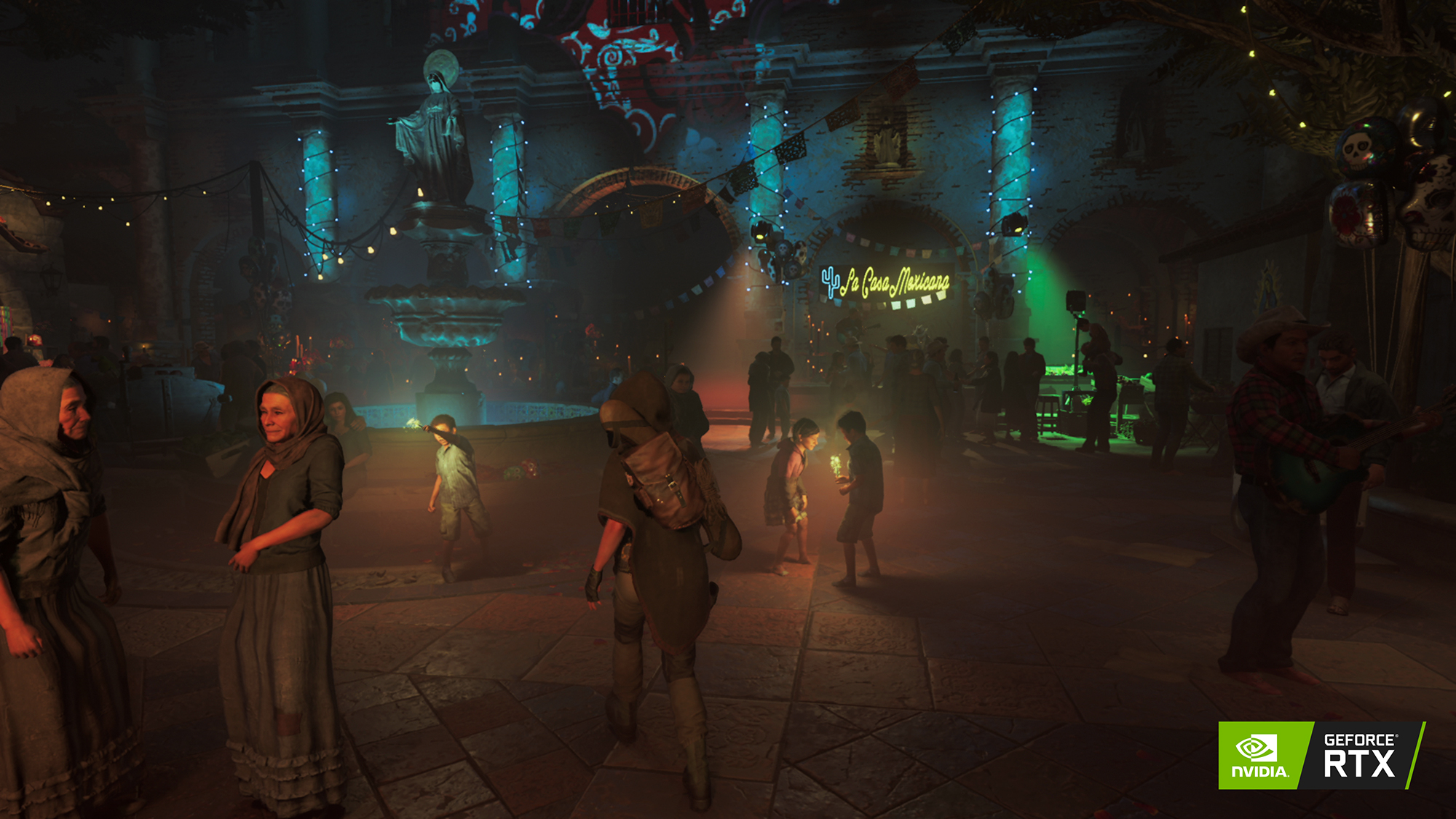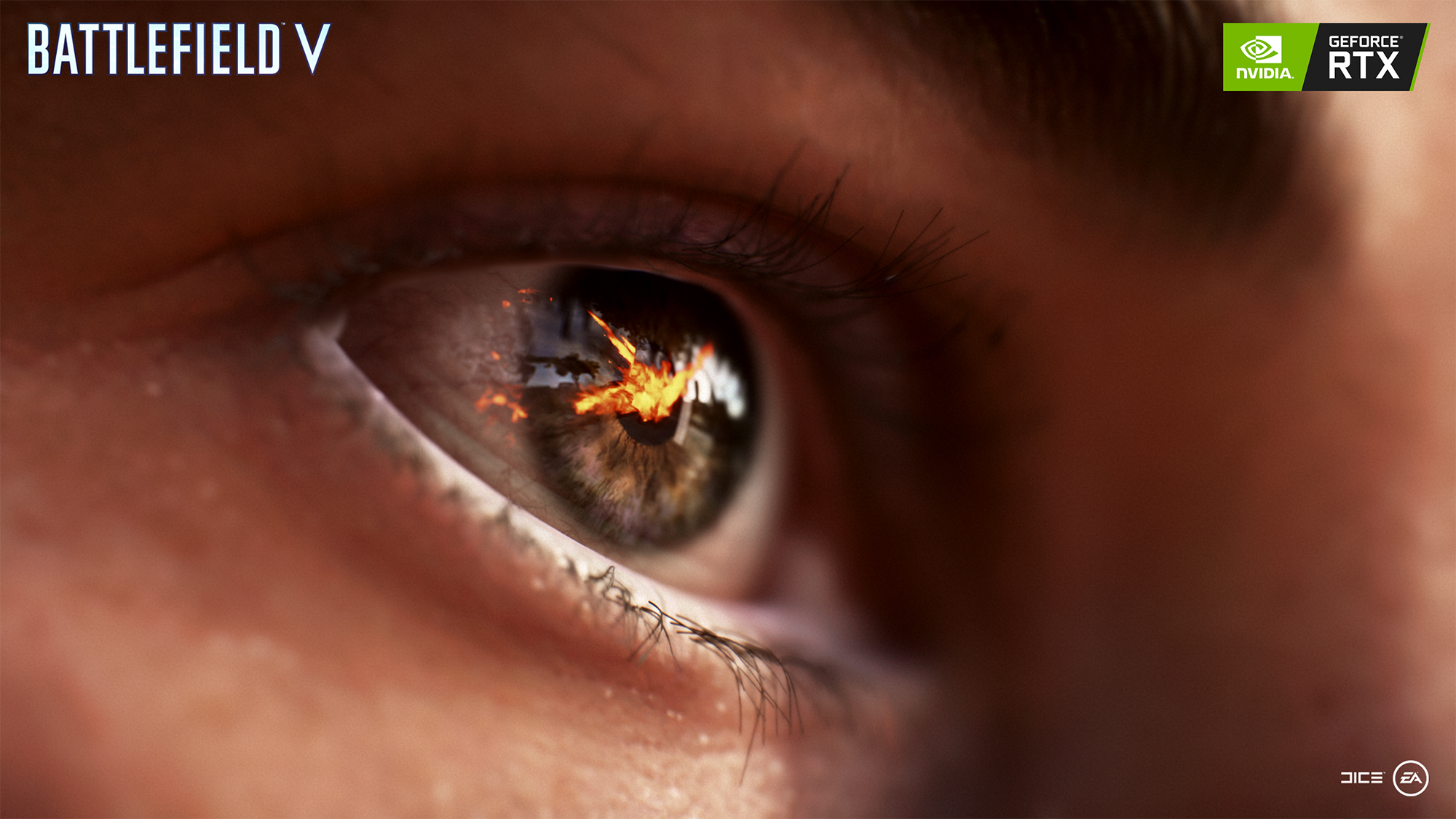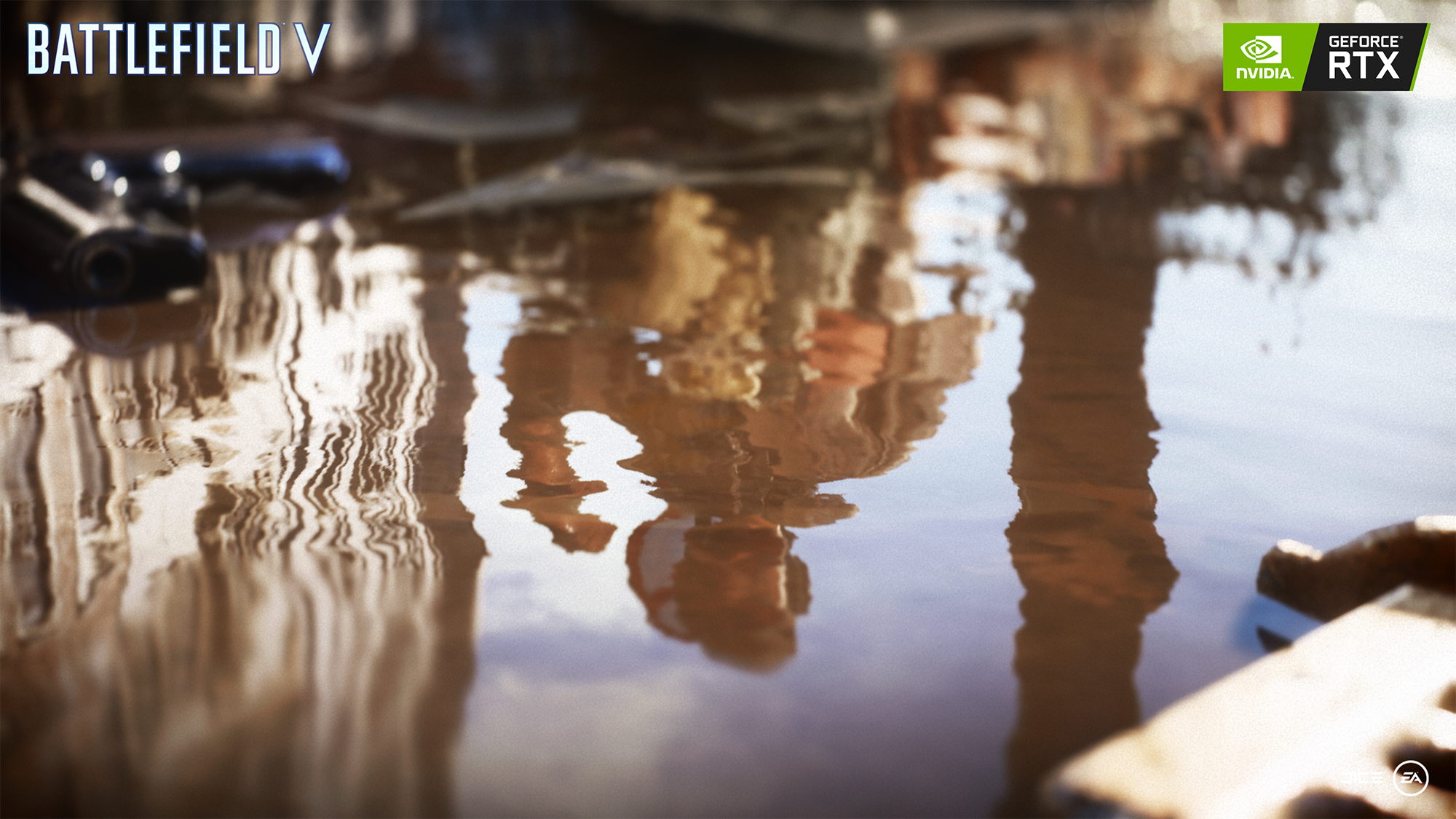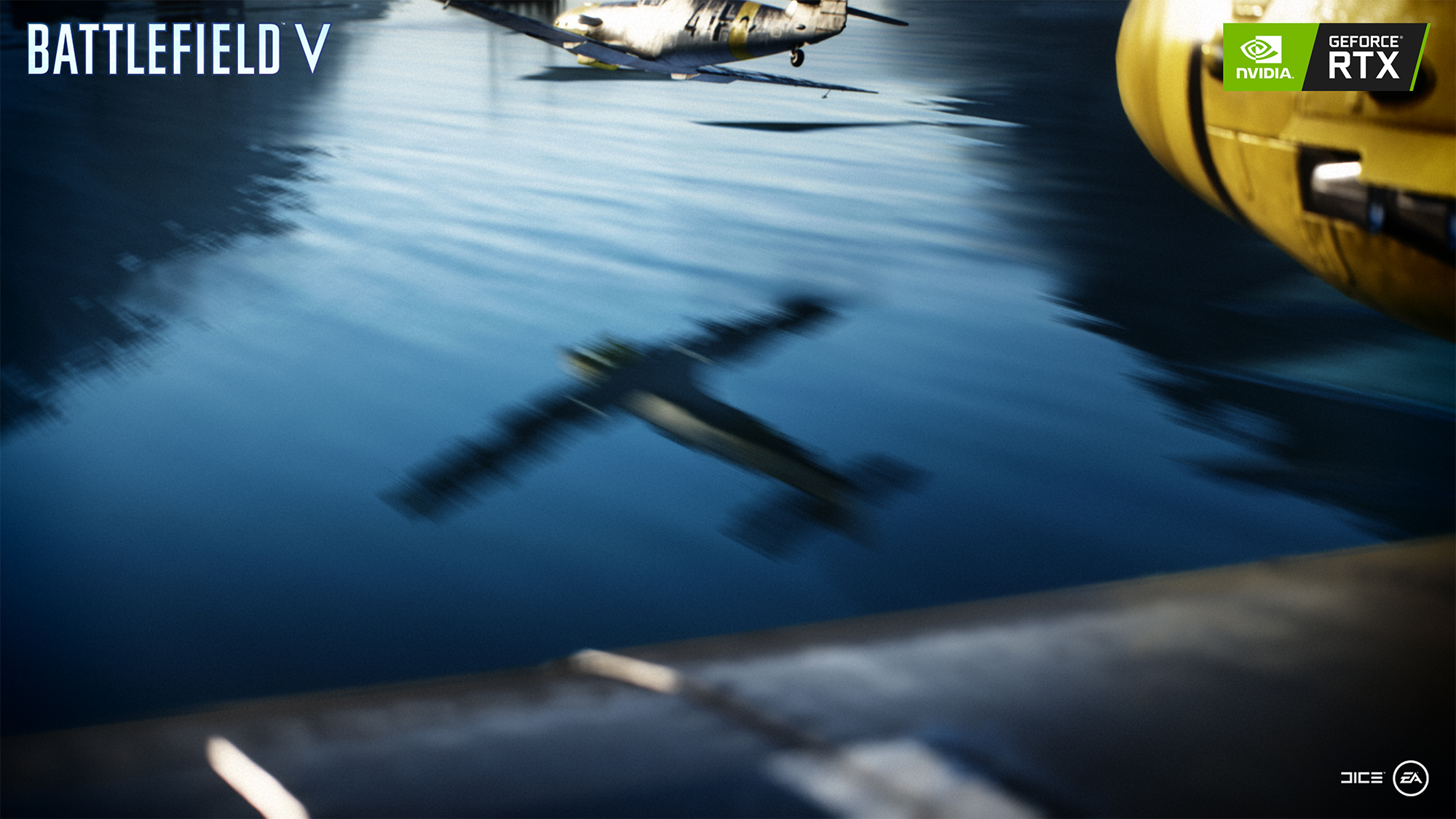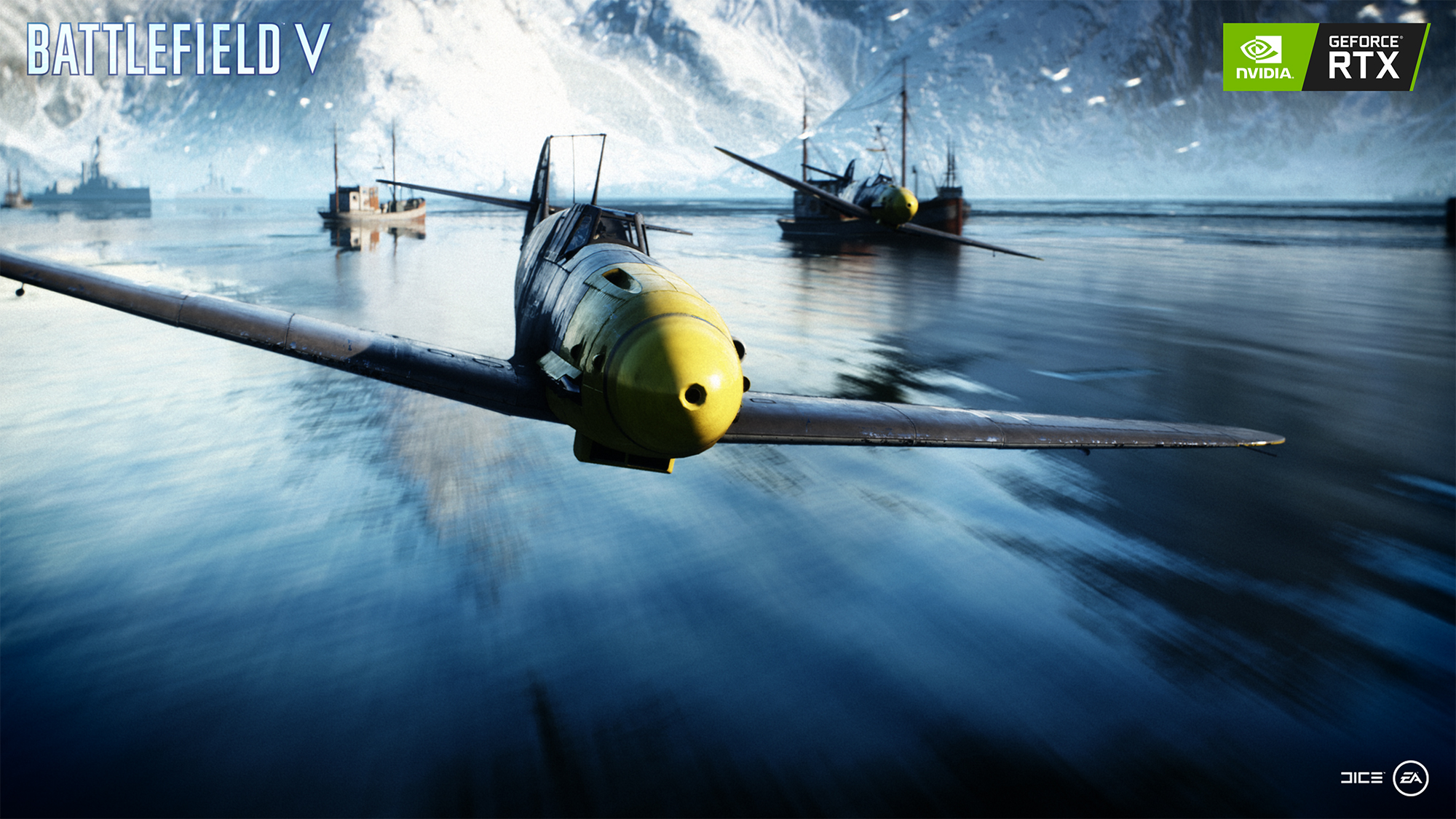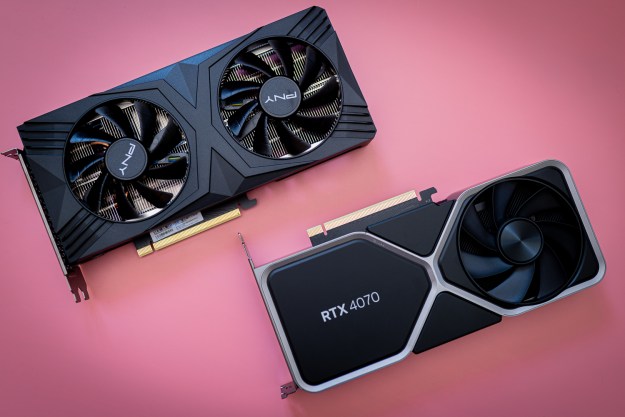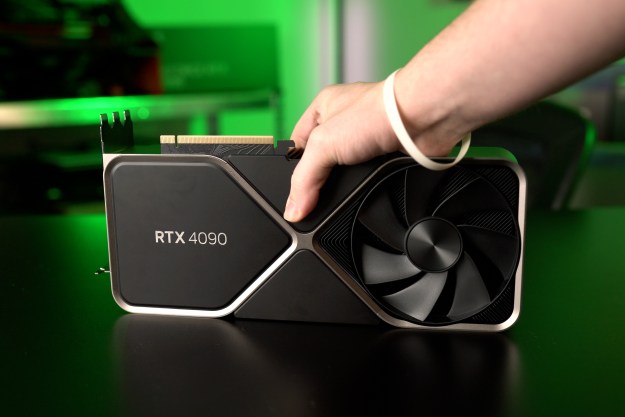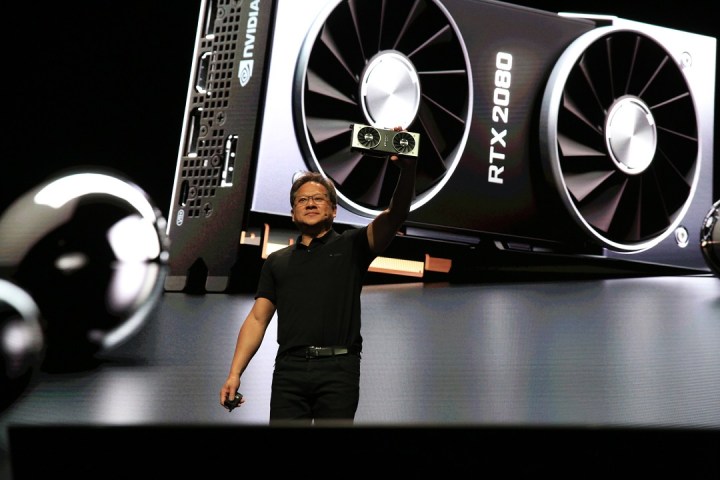
As expected, Nvidia introduced its new GeForce RTX 20 Series of add-in desktop graphics cards for gamers during its pre-show Gamescom press event. The new family is based on Nvidia’s new “Turing” architecture focusing on real-time ray tracing for believable, photo-realistic gaming.
Available to pre-order today and available on the market August 20, the GeForce RTX 2070 will have a starting price of $500, capable of eight giga rays per second and packing 8GB of on-board GDDR6 memory. Moving up the line will be the RTX 2080 with a starting price of $700 packing the expected 8GB of GDDR6 memory and capable of eight giga rays per second. The third card is the RTX 2080 Ti with a starting price of $1,000 with 11GB of on-board memory and capable of pushing 10 giga rays per second.
| RTX 2080 Ti | RTX 2080 | RTX 2070 | |
| CUDA cores: | 4,352 | 2,944 | 2,304 |
| Base speed: | 1,350MHz | 1,515MHz | 1,410MHz |
| Boost speed: | 1,545MHz | 1,710MHz | 1,620MHz |
| Boost speed (FE model): | 1,635MHz | 1,800MHz | 1,710MHz |
| Memory (GDDR6): | 11GB | 8GB | 8GB |
| Memory speed: | 14Gbps | 14Gbps | 14Gbps |
| Memory interface: | 352-bit | 256-bit | 256-bit |
| Memory bandwidth: | 616GB/s | 448GB/s | 448GB/s |
| Ports: | DisplayPort 1.4 HDMI 2.0b USB-C* *To support VirtualLink |
DisplayPort 1.4 HDMI 2.0b USB-C* *To support VirtualLink |
DisplayPort 1.4 HDMI 2.0b USB-C* *To support VirtualLink |
| Max resolution: | 7,680 x 4,320 | 7,680 x 4,320 | 7,680 x 4,320 |
| Max monitor support: | 4 | 4 | 4 |
| Size (in inches): | 4.556 x 10.5 | 4.556 x 10.5 | 4.435 x 9.0 |
| Power: | 250 watts | 215 watts | 185 watts |
| Power (FE model): | 260 watts | 225 watts | 175 watts |
| Power connectors: | 2x 8-pin | 1x 8-pin 1x 6-pin |
1x 8-pin (FE model only?) |
| Availability: | September 20 | September 20 | Not dated |
| Starting price: | $1,000 | $700 | $500 |
| Founders Edition price: | $1,200 | $800 | $600 |
As shown above, Nvidia’s prices for its Founders Edition models are a little higher. You can pre-order the 2080 Ti model for $1,200 while the RTX 2080 costs $800 and the RTX 2070 model costs $600. So far, there’s no sign of the rumored RTX 2060 version that’s slated to arrive later this year. Note that the RTX 2070 currently does not have a ship date while the other two cards are slated to arrive September 20.
- 1. GeForce RTX 2080 Ti
- 2. GeForce RTX 2080
- 3. GeForce RTX 2070
According to Nvidia, the underlying “Turing” architecture is the biggest leap forward in graphics technology since the company introduced CUDA. The big push with this design is accelerating ray tracing, a method of rendering area illumination, shadows and reflections realistically in real time. That’s where the “RT” aspect in the labeling comes into play.
Nvidia CEO Jensen Huang said during the show that the company spent the last ten years developing its Turing design. The resulting chip is the “second-largest” ever made packing 18.9 trillion transistors. The chip includes three key components: RT Cores dedicated to real-time ray tracing, Tensor Cores to accelerate artificial intelligence, and the Turing SM processor cores.
Based on the presentation, hardware still isn’t at a level where a single card can “brute force” photo-realistic visuals at an extremely high frame rate and resolution. That’s still performed by multi-GPU servers. And while the new RT Cores can perform 10 giga rays per second versus the non-ray tracing cores in the GeForce GTX 1080 Ti performing at 1.21 giga rays per second, they need AI to correctly “fill in the gaps.”
But Nvidia isn’t just revealing a new family of cards. Part of the presentation discussed how neural networks will pre-generate these lighting calculations. The data will then be provided through driver downloads and used by the Tensor Cores as the new RTX 20 Series renders the scene using ray tracing.
What was interesting about the demos showcased during the presentation was that the ray tracing could be switched on and off, revealing the environments before and after
Editors' Recommendations
- Nvidia RTX 50-series graphics cards: news, release date, price, and more
- Why I’m feeling hopeful about Nvidia’s RTX 50-series GPUs
- Acer’s new gaming laptop bring Nvidia RTX 40-series GPUs under $1,000
- What is ray tracing, and how will it change games?
- Nvidia’s DLSS 3.5 update flips ray tracing on its head




